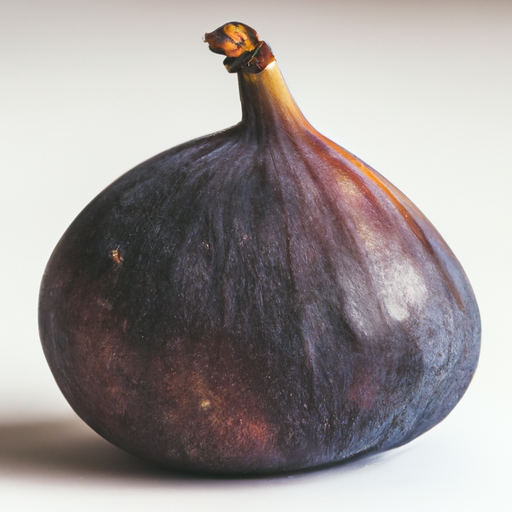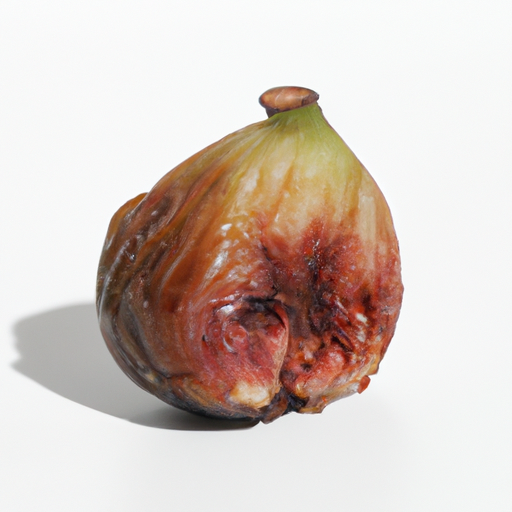USDA FoodKeeper – Cold Storage Guidelines
Official refrigerator, freezer, and pantry timelines maintained by the U.S. Department of Agriculture.
Visit USDA FoodKeeperSweet, succulent, and bursting with flavor, this unique fruit is a delightful addition to your pantry. While their luscious taste tempts you to indulge, proper storage is key to enjoying them at their peak—ideally within two days of purchase. With a low risk of spoilage, keeping an eye on their freshness ensures you savor every bite!
30 most common foods with instant answers. Print it and stick it on your fridge—completely free! Want more? Upgrade to the complete guide with 70+ foods.


Pantry
Room temperature
Dried or frozen
2 days
180 days
Moldy appearance, off smell
Jam-making, baking
Dates
Sure thing! So, expiration dates are more about safety, while "best quality" dates are more about taste and texture. For figs, the expiration date is when it's no longer safe to eat them due to potential spoilage or bacterial growth. However, the "best quality" date indicates when the figs might start to lose their flavor, color, or overall appeal, but they are still safe to eat. For example, if the expiration date on your figs is tomorrow, but they still look and smell fresh, they are most likely safe to eat. However, if the best quality date was a week ago, the figs might be a bit mushy and less flavorful, but they should still be okay to consume. Personally, I usually go by the look and smell test. If my figs still appear fresh and smell okay past the best quality date, I'll give them a try. But if they look moldy or off in any way, I'd play it safe and toss them.
To determine if a fig has gone bad, look for mold or dark spots on the skin, which indicate spoilage. Rotten figs may also have a sour or off-putting smell. When touched, a bad fig will feel mushy or overly soft, rather than firm and plump.
Hey there! Let's chat about figs and food safety. While figs are delicious and nutritious, there are some foodborne illness risks to be aware of. One common risk with figs is contamination from bacteria like E. coli or Salmonella, especially if they're not washed properly. Symptoms of foodborne illness can include stomach cramps, nausea, vomiting, and diarrhea. To keep your figs safe to eat, make sure to rinse them thoroughly under running water before enjoying. If you plan to eat the skin, like in fresh figs, scrub them gently with a brush to remove any dirt or bacteria. It's also essential to store figs properly. Keep them in the refrigerator if you're not eating them right away to prevent spoilage. Remember, a little caution goes a long way in enjoying your figs without any tummy troubles. Stay safe and savor those sweet figs!
Hey there! Storing figs can be tricky, but I've got some tips to keep those delicious fruits fresh and tasty for longer. 1. **Refrigerate them**: Figs are delicate and can spoil quickly at room temperature. Keep them in the fridge in a single layer on a paper towel-lined tray to prevent them from getting squished or bruised. 2. **Use airtight containers**: If you've cut into a fig and want to store the leftover pieces, place them in an airtight container to retain moisture and prevent them from drying out. 3. **Freeze for later**: Figs freeze surprisingly well! Simply wash, dry, and freeze them on a baking sheet before transferring them to a freezer-safe bag. They make a great addition to smoothies or baked goods. 4. **Get creative with storage**: If fridge space is limited, consider drying figs to extend their shelf life. You can also make fig jam or preserves to enjoy them year-round. I love adding sliced figs to salads or enjoying them with cheese and crackers. Experiment with different ways to enjoy figs and make the most of their unique flavor!
Hey there! Did you know that figs have been around for thousands of years and are considered one of the oldest cultivated fruits? Ancient Greeks and Romans saw the fig tree as a symbol of prosperity and peace. It's pretty cool to think about all that history packed into a tiny fruit, right? In some cultures, like in the Middle East, figs are a symbol of abundance and fertility. They are often used in traditional dishes and even in some religious ceremonies. Plus, figs have this amazing sweet and chewy texture that makes them a versatile ingredient in both sweet and savory recipes. Here's a fun fact: Figs are actually not fruits – they're inverted flowers! The crunchy bits you find inside a fig are actually seed pods. Mind-blowing, huh? So, the next time you bite into a fig, think about all the stories and traditions woven into this little powerhouse of flavor and history. Enjoy!
Figs can be left out at room temperature for up to 2 days. After this time, they should be refrigerated to maintain freshness and prevent spoilage.
If Figs have been at room temperature for a day, they are generally safe to eat unless they show signs of spoilage like mold, off odors, or unusual texture. It's best to refrigerate them after this period to extend their shelf life.
When Figs are frozen, their texture may become softer and slightly mushy upon thawing. While the flavor is preserved, the texture may not be as firm as fresh Figs. Consider using frozen Figs in recipes like smoothies or cooked dishes rather than eating them raw for the best experience.
The shelf life of Figs is primarily determined by their freshness at the time of purchase rather than the brand. However, reputable brands that prioritize quality control may offer Figs with a longer shelf life due to better handling and storage practices. Always check the expiration or best-by date on the packaging for specific guidance.
Cooking Figs can extend their shelf life by a few days as the heat helps kill bacteria and slows down spoilage. However, cooked Figs should still be refrigerated promptly and consumed within 2 days to ensure food safety. Pay attention to proper cooking techniques to avoid contamination during the process.
It is generally safe to store Figs next to other fruits in the pantry as long as they are not overly ripe or damaged. However, to prevent cross-contamination and maintain optimal freshness, it's advisable to keep different fruits in separate containers or bags. Check for ethylene-sensitive fruits like berries that may affect the ripening of Figs.
When transporting Figs for a few hours, pack them in a cool bag or insulated container with ice packs to maintain their freshness. Avoid exposing them to direct sunlight or high temperatures during transit. Once you reach your destination, refrigerate the Figs promptly to preserve their quality and safety.
The type of container can impact the shelf life of Figs. Opt for breathable containers or perforated bags to allow air circulation and prevent moisture buildup that can lead to mold growth. Avoid airtight containers for storing Figs as they may promote spoilage. Keep Figs in a cool, dry place away from direct sunlight for the best results.
30 most common foods with instant answers. Print it and stick it on your fridge—completely free! Want more? Upgrade to the complete guide with 70+ foods.
Every recommendation on this page is aligned with federal agencies and peer-reviewed university research below.
Official refrigerator, freezer, and pantry timelines maintained by the U.S. Department of Agriculture.
Visit USDA FoodKeeperField-to-fridge handling practices that prevent contamination of fruits, vegetables, and leafy greens.
Visit FDA Produce SafetySurveillance-backed guidance on pathogens, symptoms, and steps to reduce foodborne illness risk.
Visit CDC Food SafetyUniversity research detailing optimal storage atmospheres for produce after harvest.
Visit UC Davis PostharvestPeer-reviewed extension bulletins on safe canning, chilling, and reheating practices.
Visit Penn State ExtensionNeed deeper reading? Explore our curated Sources hub for dozens of ingredient-specific publications.
Scan your food directly and get instant safety info using our AI-powered camera feature.
We have recipes that can help you safely use fig past its expiration date!
View Recipes →Cooking Ingredients
View expiration date and storage guide →
Baby Food
View expiration date and storage guide →
Baking Supplies
View expiration date and storage guide →
Beverages
View expiration date and storage guide →
Grains & Pasta
View expiration date and storage guide →
Condiments & Spices
View expiration date and storage guide →
Grains & Pasta
View expiration date and storage guide →
Health Supplements
View expiration date and storage guide →
Cooking Ingredients
View expiration date and storage guide →
Important: These are general guidelines based on authoritative sources listed above. Always use your best judgment and when in doubt, throw it out. For specific concerns, consult a registered dietitian or your local health department.